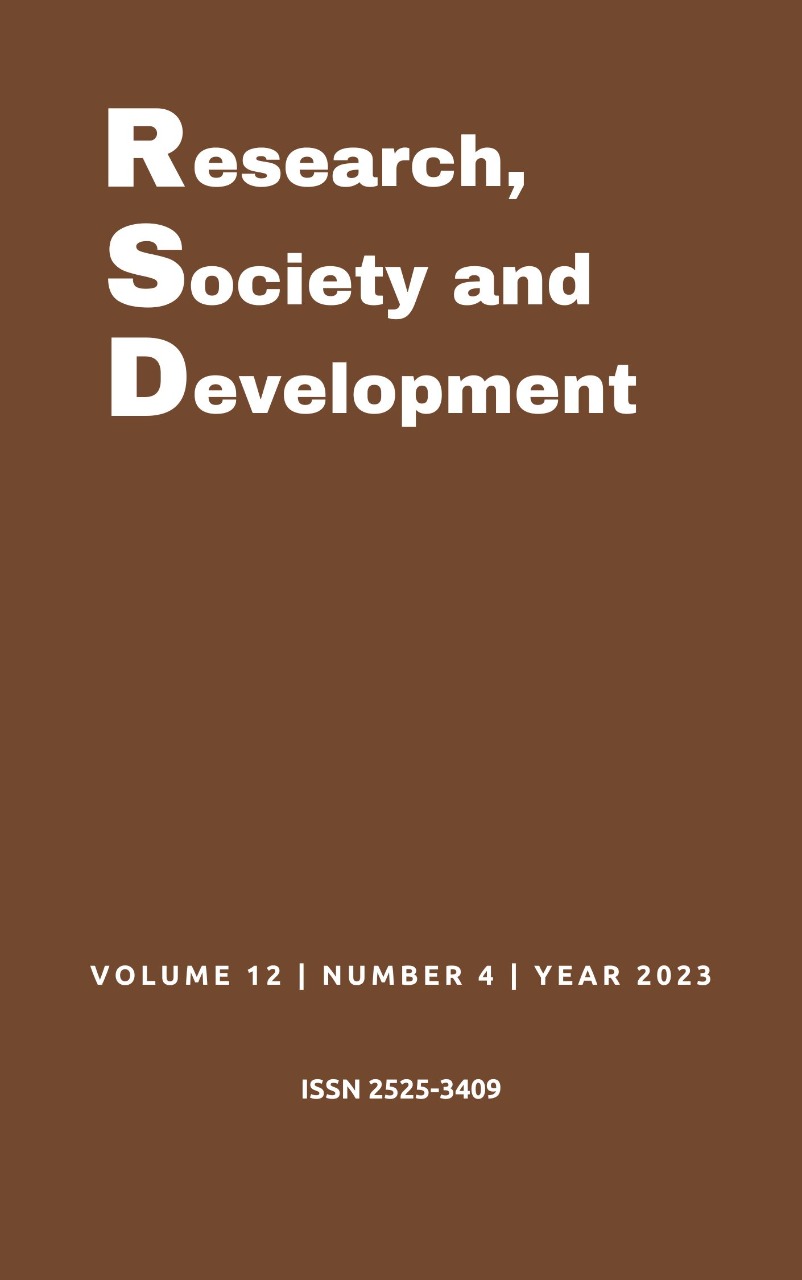Epidemiological profile and quality of life of patients with fibromyalgia in Rheumatology services in Aracaju-SE
DOI:
https://doi.org/10.33448/rsd-v12i4.41297Keywords:
Fibromyalgia, Epidemiological profile, Quality of life.Abstract
Fibromyalgia (FM) is a relatively common syndrome characterized by chronic widespread musculoskeletal pain accompanied by various somatic and psychological symptoms. Its prevalence has been estimated to be in the range of 2% to 7%. The vast majority of diagnosed patients are female, white, and middle-aged - around 50 years old. In addition, these patients have alterations in various social and personal aspects that interfere with overall quality of life. Mood changes, complaints of intense fatigue, difficulties sleeping, problems performing common activities and occupations are the main obstacles faced by these patients on a daily basis. This study aimed to provide a better understanding of the profile of fibromyalgia patients and the interference of disease-associated factors on their quality of life. Thus, a cross-sectional and quantitative study was conducted based on the application of a form constructed by the researchers themselves, with the Fibromyalgia Impact Questionnaire (FIQ) validated in Brazil, containing 40 questions, in addition to the questionnaire with sociodemographic and dichotomous variables, and the visual analogue pain scale (VAS). The study included patients from three hospitals in Aracaju-SE, and data were collected through the application of forms during consultations. The collected data were used to determine the epidemiological profile and impact on the quality of life of patients with fibromyalgia. The results of this study provide a better understanding of the profile of fibromyalgia patients and the interference of disease-associated factors on their quality of life.
References
Alvarez, M. C. et al. (2022). Exploring the Relationship between Fibromyalgia-Related Fatigue, Physical Activity, and Quality of Life. International Journal of Environmental Research and Public Health. 19(8), 4870.
Arnold, L. M., Choy, E., Clauw, D. J., Goldenberg, D. L., Harris, R. E., Helfenstein Jr, M., ... & Wang, G. (2016). Fibromyalgia and chronic pain syndromes: a white paper detailing current challenges in the field. The Clinical journal of pain, 32(9), 737.
Choy, E. et al. (2010). A patient survey of the impact of fibromyalgia and the journey to diagnosis. BMC health services research, 10(1), 1-9.
Climent-Sanz, C. et al. (2020). Patient reported outcome measures of sleep quality in fibromyalgia: a COSMIN systematic review. International journal of environmental research and public health, 17(9), 2992.
Galvez-Sánchez, C. M., Duschek, S., & Reyes Del Paso, G. A. (2019). Psychological impact of fibromyalgia: current perspectives. Psychology research and behavior management, 117-127.
Gelonch, O. et al. (2018). The effect of depressive symptoms on cognition in patients with fibromyalgia. Plos one, 13(7), e0200057.
Goesling, J. et al. (2015). Associations between pain, current tobacco smoking, depression, and fibromyalgia status among treatment-seeking chronic pain patients. Pain Medicine, 16(7), 1433-1442.
Haukoos, J. S., & Lewis, R. J. (2005). Advanced statistics: bootstrapping confidence intervals for statistics with “difficult” distributions. Academic emergency medicine, 12(4), 360-365.
Lakens, D. (2013). Calculating and reporting effect sizes to facilitate cumulative science: a practical primer for t-tests and ANOVAs. Frontiers in psychology, 4, 863.
Lee, J. W., Lee, K. E., Park, D. J., Kim, S. H., Nah, S. S., Lee, J. H., ... & Lee, S. S. (2017). Determinants of quality of life in patients with fibromyalgia: A structural equation modeling approach. Plos one, 12(2), e0171186.
Maffei, M. E. Fibromyalgia: Recent advances in diagnosis, classification, pharmacotherapy and alternative remedies. International Journal of Molecular Sciences. 21 (21), 7877.
Montoro, C. I., & Galvez-Sánchez, C. M. (2022). The Mediating Role of Depression and Pain Catastrophizing in the Relationship between Functional Capacity and Pain Intensity in Patients with Fibromyalgia. Behavioural Neurology, 2022.
Marques, A. P., Santos, A. M. B., Assumpção, A., Matsutani, L. A., Lage, L. V., & Pereira, C. A. B. (2006). Validação da versão brasileira do Fibromyalgia Impact Questionnaire (FIQ). Revista Brasileira de Reumatologia, 46, 24-31.
Sauch Valmaña, G., Miró Catalina, Q., & Vidal-Alaball, J. (2022). Prevalence and Incidence of Patients With Fibromyalgia in Catalonia Between 2010 and 2017: A Descriptive Observational Study. Journal of Primary Care & Community Health, 13, 21501319221094169.
Siracusa, R., Paola, R. D., Cuzzocrea, S., & Impellizzeri, D. (2021). Fibromyalgia: pathogenesis, mechanisms, diagnosis and treatment options update. International journal of molecular sciences, 22(8), 3891.
Verbunt, J. A., Pernot, D. H., & Smeets, R. J. (2008). Disability and quality of life in patients with fibromyalgia. Health and Quality of Life Outcomes, 6(1), 1-8.
Downloads
Published
Issue
Section
License
Copyright (c) 2023 Luísa Teixeira Silveira; Maria Letícia Carvalho da Cruz Ramos; Alejandra Debbo; Gabriela Peres de Oliveira Krauss; Lucas Augusto Reis Pereira de Oliveira; Paulo Franco de Oliveira ; Maria Stael Carvalho Da Cruz Ramos

This work is licensed under a Creative Commons Attribution 4.0 International License.
Authors who publish with this journal agree to the following terms:
1) Authors retain copyright and grant the journal right of first publication with the work simultaneously licensed under a Creative Commons Attribution License that allows others to share the work with an acknowledgement of the work's authorship and initial publication in this journal.
2) Authors are able to enter into separate, additional contractual arrangements for the non-exclusive distribution of the journal's published version of the work (e.g., post it to an institutional repository or publish it in a book), with an acknowledgement of its initial publication in this journal.
3) Authors are permitted and encouraged to post their work online (e.g., in institutional repositories or on their website) prior to and during the submission process, as it can lead to productive exchanges, as well as earlier and greater citation of published work.


